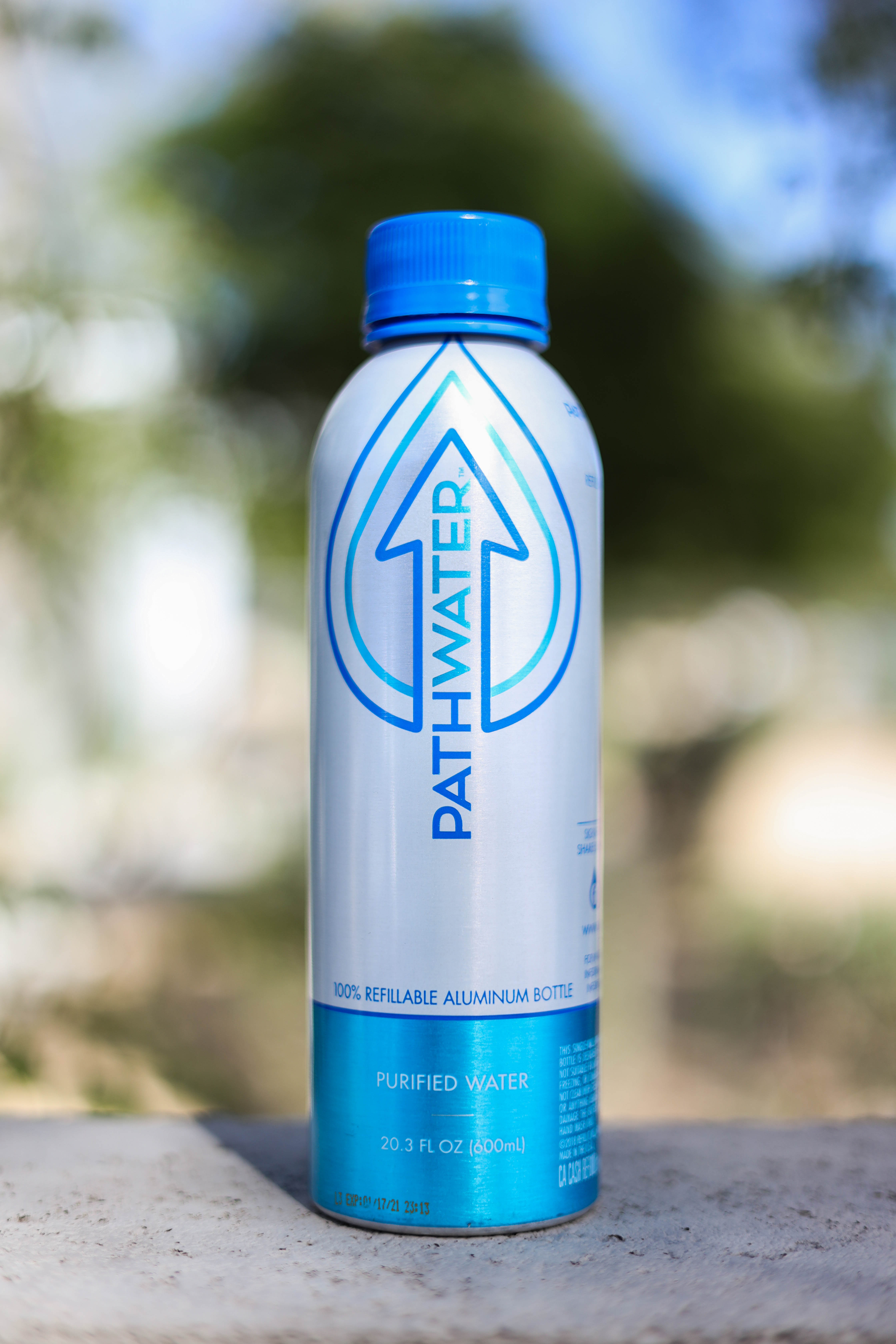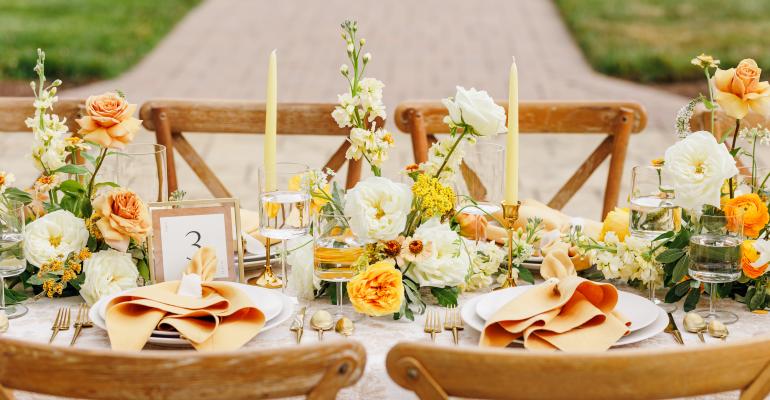In our last issue, we discussed attaining net zero carbon emissions through several methods, including reducing waste. Let’s take a deeper dive into limiting waste through a framework known as “circularity,” which works to limit waste at the front end of any production, and factors in how to eliminate waste by plugging it back into the system. Here are some ways to create events in a circular system.
Choose sustainable vendors
Part of shifting from a linear to a circular approach is understanding your place in the ecosystem. Instead of thinking of your event as the last stop before the landfill, zoom out and see who else and what else is involved in providing event components. If you zoom back far enough, you’ll see that the line begins at the earth and passes through plenty of people before getting to you as a planner, before returning back to the earth.
You and your vendors have a symbiotic relationship—the action of one of you affects everyone. Lean into this relationship to create a harmonious closed-loop circle that reduces waste at every phase of an event.
Catering
By working only with vendors who follow sustainability practices and source responsibly, you can reduce the damaging effects of your event and actually harness long term community. This certainly includes your caterer—where do they source their food from? What programs do they have to reduce waste? Do they compost? Where does the food come from—a corporate distributor who buys from mass-producing factories, or a local gardener? Check out this Catersource blog to learn how catering company M Culinary Concepts works in sustainable food systems.

Offering guests reusable bottles keeps material in the supply chain and eliminates waste immediately. Photo courtesy M Culinary Concepts
Venue
Often, your venue will have a preferred caterer, and that’s one more reason to partner with sustainable vendors. These venues will follow strict sustainability processes, or even have incentive programs. PAIKKA, an event space in
St. Paul, MN, offers a 10% discount off the total rent cost in exchange for following the venue’s sustainability guidelines during an event. These guidelines include things like working with the venue’s pre-approved sustainable vendor list, skipping printed programs, ditching single-use plastic, and working with a local florist, to name a few.
Rental
Working with rental companies is inherently sustainable, since many rentable items can be reused for decades instead of making their way to the landfill.
“Renting materials that can be reused rather than discarded eliminates unnecessary consumer waste even before an event is held,” says James Auerbach, Vice President of the Event Segment of the American Rental Association. “Rather than finding ways to offset an event’s carbon emissions, rental allows planners and their clients to limit waste before it occurs.”
Go through your inventory of event materials to see what you can rent. “Items such as décor, lighting, and carpeting can be replaced with more sustainable rental options, including LED lighting, bamboo flooring, and open-air tents that take advantage of natural light and reduce energy costs,” Auerbach adds. Create a partnership with a rental company so that you can work together in reducing waste from your events.
Floral
Similar to catering, finding a floral designer who follows sustainable practices is key to ensuring your event won’t create waste. By working with someone who sources flowers from local growers, you help to reduce transportation emissions. If flowers are organic, you’re ensuring your event doesn’t contribute to the use of chemicals in the soil as well as supporting growers who practice sustainable farming. A sustainable florist will also work with recyclable and reusable materials (meaning: no disposable foam).

Dried herbs and other plants are a wonderful swap for sustainable confetti. These plants can be chosen based on symbolic meaning, infusing the event with a deeper sentiment, and can go right back into the ground—a true closed loop. Photo courtesy Weirdo Weddings (Pink Light Images)
Hotels
If your event requires guests to stay in lodging nearby, make sure to recommend hotels that also follow sustainable practices. An article from Cvent lays out ways hotels can make green changes, like having a water bottle refilling station, using energy efficiency techniques, offering an electric vehicle charging station, composting, and installing solar panels.
Working with vendors who share the same values as you and who put their money where their mouths are will create a sustainable system where you all work together to create events that minimize waste and put material back into the cycle. It also means you don’t have to go it alone in the sustainability frontier—supporting each other makes the work easier for everyone!
A team effort
Circular events can benefit more than just the earth; an article from MeetingsNet shows that this approach improves human, social, financial, natural, intellectual, and manufactured capital.
Shifting from a linear approach to a circular approach requires a shift in mindset. From the beginning planning stages to the final tear down, look at your event operation with new eyes. All change begins with awareness, so as you begin to shift from linear to circular, just start with nonjudgmental observation of all your processes and systems.
In her 2023 Catersource + The Special Event session Talkin’ Trash: A Candid Conversation About Zero Waste, Primal Alchemy Catering co-owner Dana Buchanan said, “If you want to commit to this, and if you want to do this as a business, you really have to start with reviewing your operation and making a plan.”
The shift will require your own desire to change, plenty of knowledge, trial-and-error action, and perseverance. Lean on your team, even create buy-in for them: “If they come up with ideas to lessen trash and have less waste, do incentives for them,” says Buchanan.
Creating a truly sustainable event industry, where waste doesn’t exist and events contribute to a regenerative, closed-loop cycle, isn’t something you can or should do alone. By working with your teams and vendors, you’ll be able to start creating sustainable events.

For this Brooklyn botanic garden wedding by Kathryn Cooper Weddings, the couple used their personal collection of glassware and antique books as the centerpieces for their wedding. They used just a few seasonal flowers to fill their colorful vases, ensured there was no single-use waste at the event, and took all decorations back to their home following their wedding, to be enjoyed for decades to come. Talk about reducing waste from the start! Photo courtesy Kathryn Cooper Weddings
If your team is all on board, they’ll be able to sell your events as sustainable events as well, attracting clients who will work with you to create events that act in harmony with the planet and our own economy and society.
A paper for the 27th International Sustainable Development Research Society Conference titled Circular Economy in the Event Sector stated, “The events sector...has been one of the sectors that most of all suffered the consequences of the pandemic and now, it can be among the protagonists of the paradigm shift by implementing circular economy’s principles in events’ management strategies.”
The events industry is a powerful industry that truly impacts the world. By contributing to the success of sustainably, we’re also contributing to the success of our own industry.
What are you waiting for? Take some notes, talk to your teams, and see what you can do to close the loop and create circular events!
Click here to read Part 1 of Going in Circles (In a Good Way)





